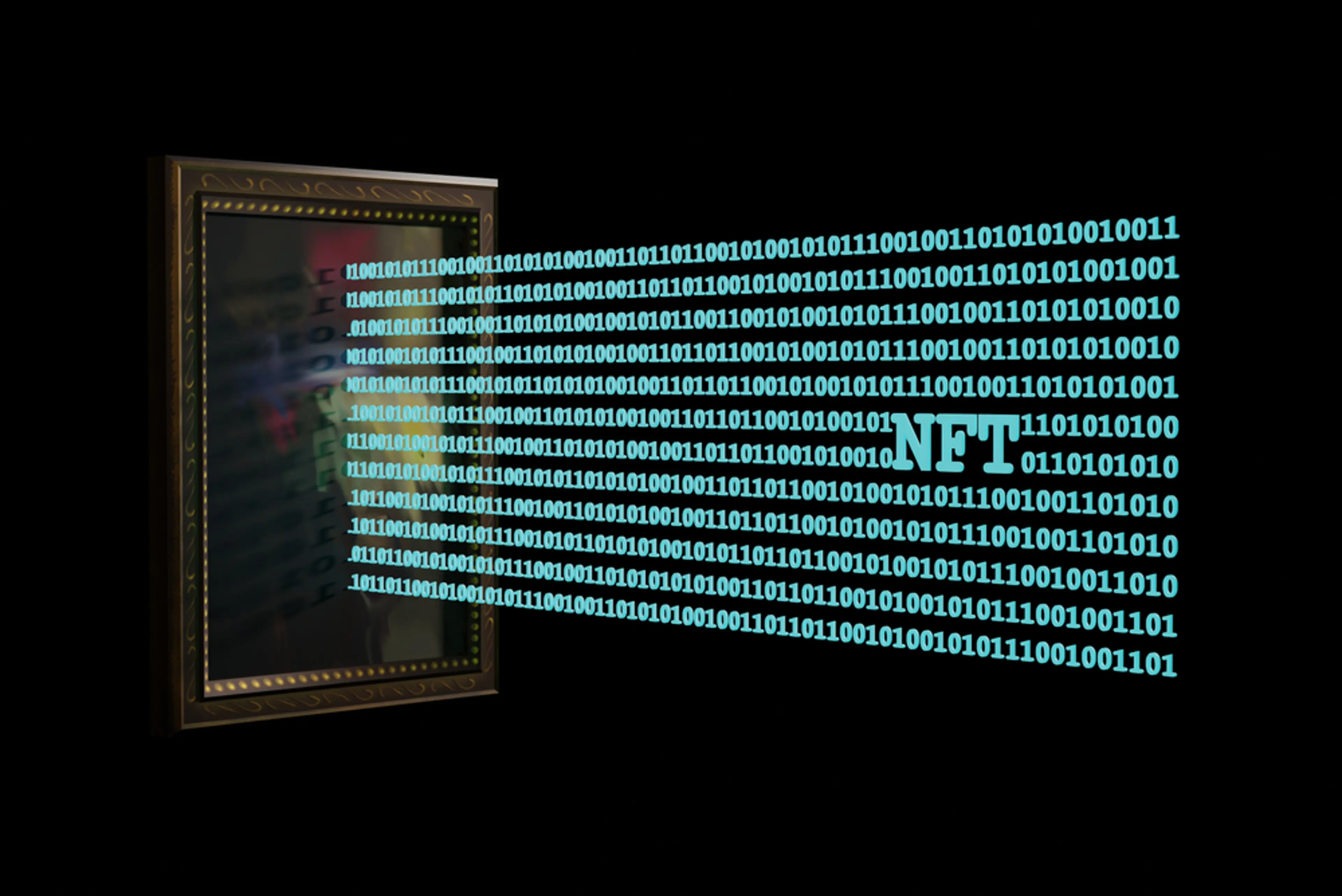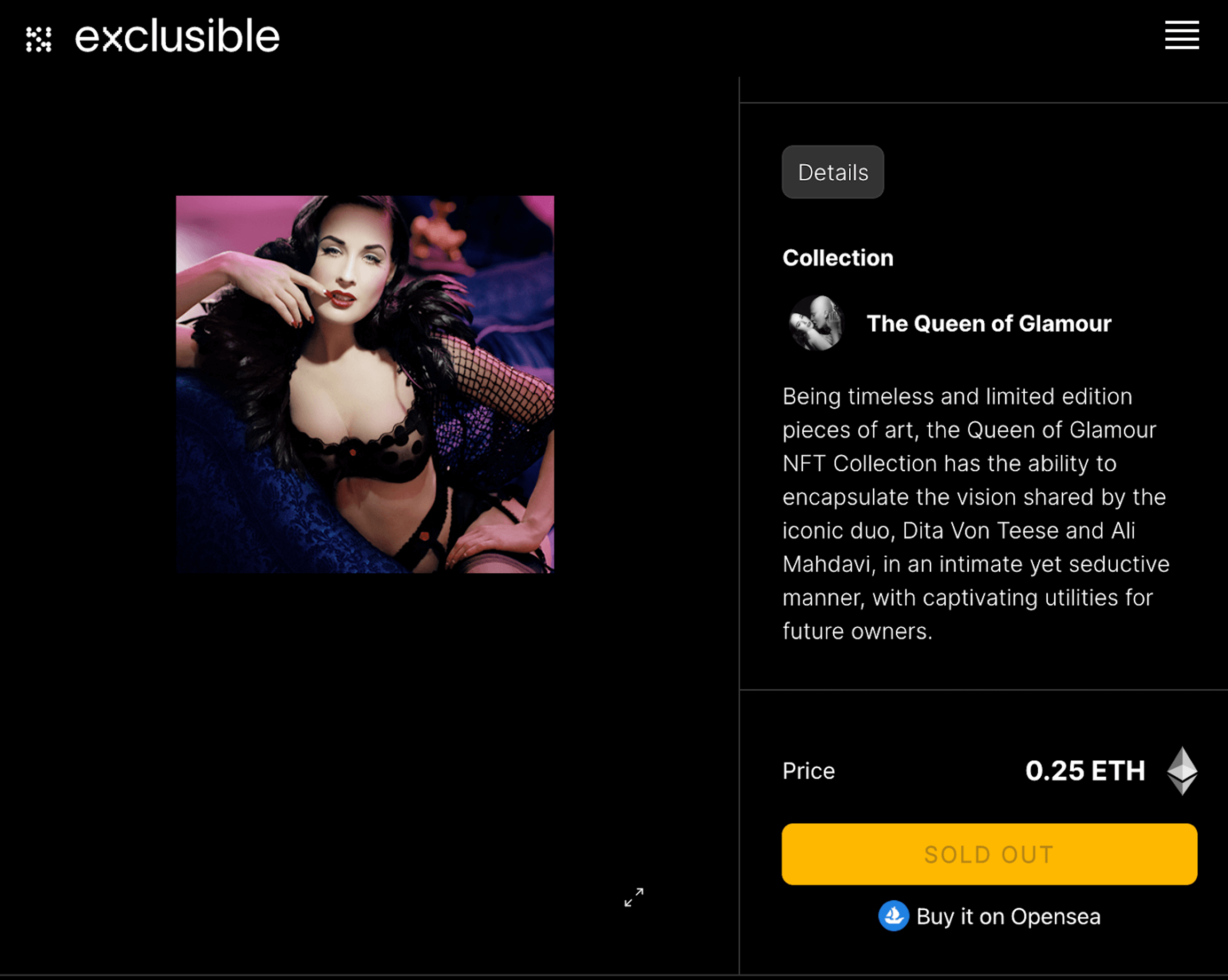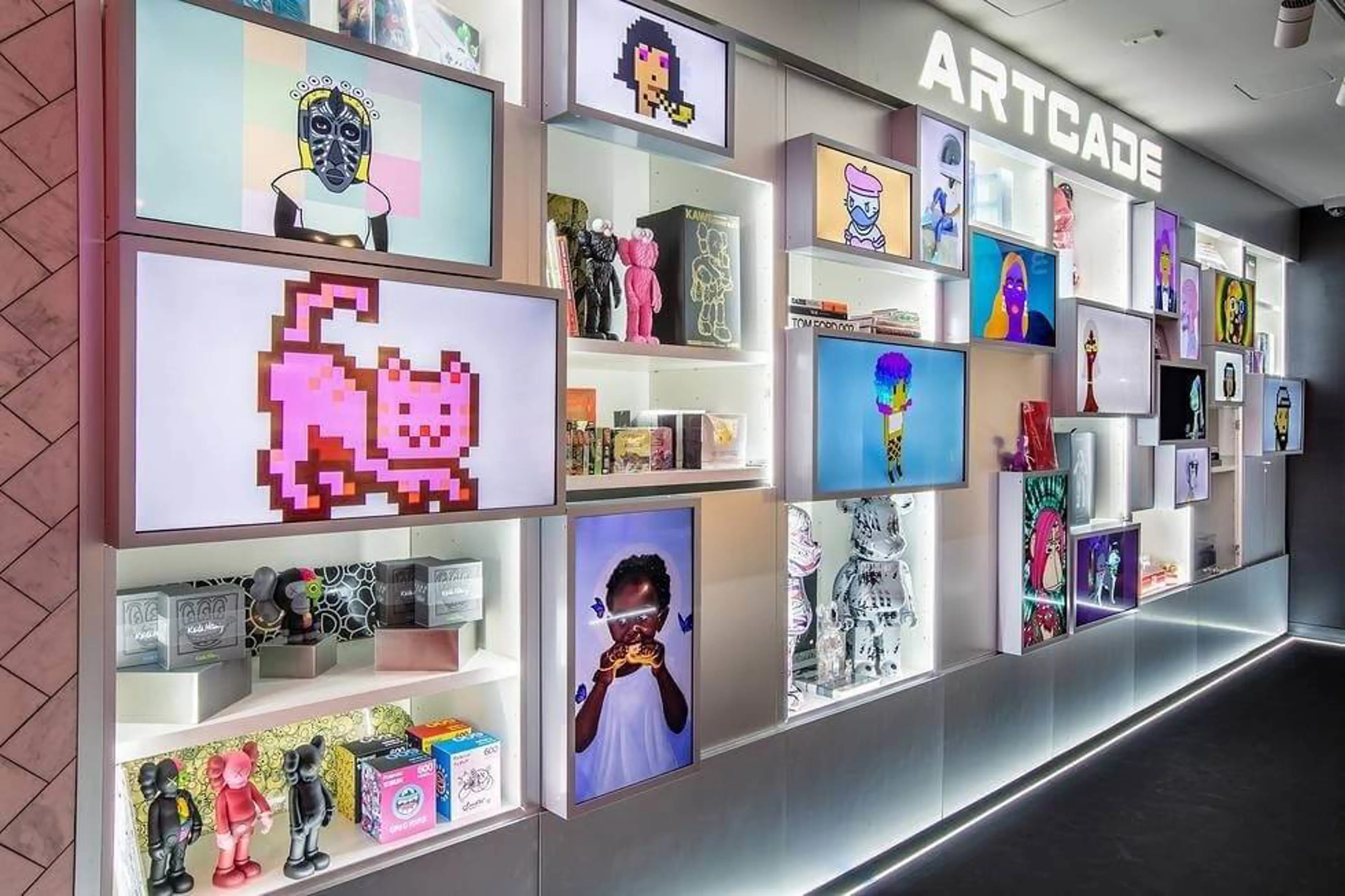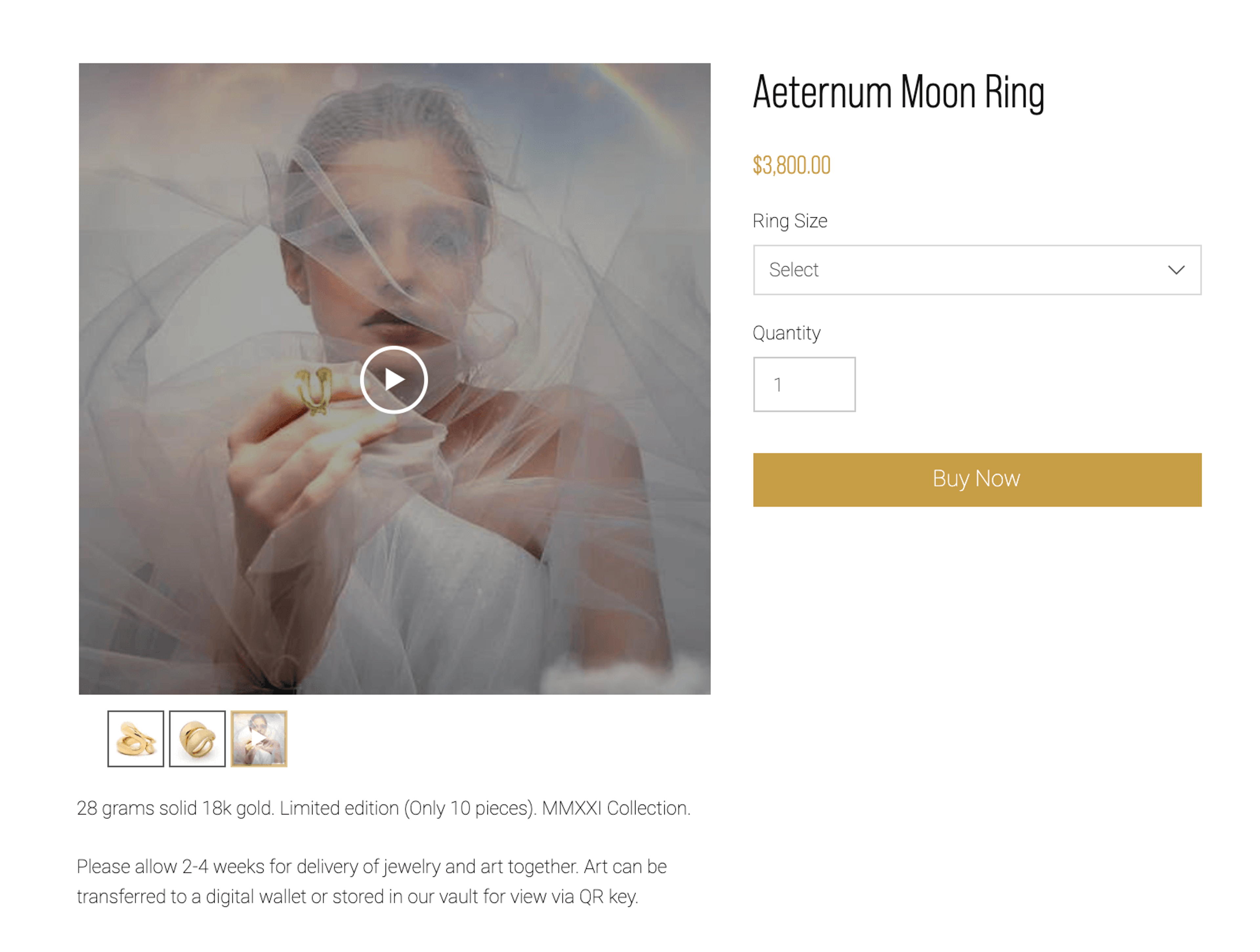
Retail
1 Jan 2022
5 Min Read
The Rise of NFTs in Retail
Great news: according to The Collins Dictionary, NFT was the word of 2021, which means there now exists a go-to way to explain these elusive virtual tokens to your grandparents...
Defined as “a unique digital certificate, registered in a blockchain, that is used to record ownership of an asset such as an artwork or a collectible,” in other words, an NFT is a chunk of digital data that records who a piece of digital work belongs to.
Now the world is up to speed at what exactly an NFT is (we’ve all seen the dodgy art, the Louis Vuitton mobile game and Gucci’s AR sneakers), the scope for retail brands to jump on board the NFT train is growing. Are you ready?
Fashion forward
As NFTs continue to create new forms of fashion consumption and more aspects of people's lives move online, the demand for digital fashion and goods will increase significantly in the coming years. Add the creation of the Metaverse and there’s potential for NFT luxury brands to reach $56 billion by 2030, says cointelegraph.com.
“Of 5,000 NFTs sold [using standard currency], 60% have been to crypto natives but 40% to mainstream luxury digital fashion enthusiasts. Why? For use on social, but also to show allegiance to their favourite brands. There is definitely a connoisseurship-focused early-adopter mentality in play here.” Karinna Grant, co-founder, The Dematerialised
As with traditional art, luxury brands are tapping into NFTs to reach a wider customer base of wealthy collectors, says Glossy.co. Olivier Moingeon, chief commercial officer at startup Exclusible, a luxury NFT e-tailer that aims to be the “Net-a-Porter of NFTs”, agrees.

NFT fever is gripping the fast fashion world too. Zara has created a virtual collection that allows consumers to dress their avatars in the Spanish brand, meanwhile Rise at Seven has launched NFTs for BoohooMAN. The affordable fashion retailer is offering everything from t-shirts and outerwear, to tracksuits and hoodies, “meaning you can turn your digital wallet into a digital wardrobe in no time”. Each item is “brand new and unique, says Boohoo. “Once it's gone, it's gone.”

If the metaverse is the new catwalk, brands need to think differently about how, when and where their audience is displaying their clothing and products. Digital wardrobes give us the opportunity to express ourselves in completely new (and uninhibited) ways. Dylan Smith might not want to rock the new BoohooMAN collection, but @dylanmetaverse94 might. It’s important for brands to meet people where they are, with choices more suitable for an avatar in the ether than a sunday walk to the coffee shop. Fashion brands must consider how to use NFTs to keep pushing the boundaries of their design and giving buyers choices suitable for both their online and offline identities.
Owning time and space
Fancy owning a bit of Kate Moss? Working in association with MITNFT collective, the supermodel sold three video NFTs vignettes of herself to support Gurls Talk, an organisation that provides mental health support to young women and girls. They were sold for £11,312.
In a statement on Instagram, the supermodel said: “Time is the thing that there is never enough of. I’m intrigued by who will want to own a moment of mine. I was also drawn to the idea that this ownership can be used to help others in need hopefully gain more of it.”

Seven-time Superbowl champion Tom Brady has also launched NFT platform Autograph that brings together iconic brands and legendary names in sports, entertainment and culture via digital collections and experiences.
“We created Autograph as a way for fans and collectors to own a piece of iconic moments in sports and entertainment through authenticated and official digital collectibles, and we are just getting started,” Brady said.
It will also have interactive offerings – think live auctions, physical product drops and in-person experiences.

NFTs go in-store
Incorporating NFTs into the in-store experience is both a means to educate your audience and a way to stay ahead of the curve.
No wonder this approach is gaining traction. The first American fashion designer to jump on the trend is Rebecca Minkoff, who held an NFT exhibition at New York Fashion Week 2021 instead of a catwalk presentation.
“I do think the [physical and digital] worlds are going to merge even more,” Minkoff says. “As we’re exploring these NFTs, there’s a world where you’ll have your avatar in the metaverse. You’ll go shopping, play your video game in your new Rebecca Minkoff outfit, but then that same outfit will arrive at your house.”
How did it work? Minkoff lined the walls of the Sunken Living Room in Spring Studios with a series of dynamic images by Cass Bird, next to each of which was a barcode that led the viewer to an auction for that piece of work. “The proceeds of the 10 NFTs being sold on Opensea go to a grant for female founded companies in New York City impacted by the pandemic,” said the designer.

In December, Los Angeles-based retailer Fred Segal debuted Artcade, a “dynamic retail experience” based out of its Sunset Boulevard store. Created in partnership with media tech holding company Subnation, the experience includes an NFT gallery with digital wall displays, physical and digital products for sale, such as IRL collectibles, and a streaming studio. Cryptocurrency payments are accepted for virtual products via Coinbase, with plans to implement further crypto payments for in-store items.

As Minkoff says, the physical and digital worlds are getting closer and closer. However, brands would be remiss to think of these worlds as mutually exclusive. Instead, it’s better to think about how digital can enhance the physical experience, and vice versa. How can NFTs (or other emerging technologies) be used in-store to draw people through your doors? How should physical spaces be redesigned to better display digital products and collections? And what physical products should people have in their hands when encountering your brand on Twitch or in the metaverse? Brands who take advantage of physical and digital properties can move way beyond 2 Dimensional websites or storefronts into new realms of retail experience.
Phygital rules
While the NFT market has been primarily digital only, it is now colliding with the real world and we are beginning to see NFTs attached to physical products. Whether it’s access, wealth, influence, physical goods or now virtual goods, people love feeling like they own something others aspire to have and the latest releases take this to the next level.
Nike was one of the first brands to harness NFTs as a method of certifying product authenticity via its patented CryptoKick platform. When buyers purchase a pair of Nike shoes, a digital version of the product will be uploaded via a unique 10-digit code into a ‘virtual locker’. Not only is the digital collectable tied to the physical item, it can also then be used for video game characters or in virtual sneaker forums. The apparel giant has also just announced the acquisition of RTFKT Studios, which it calls “a leading brand that leverages cutting edge innovation to deliver next generation collectibles that merge culture and gaming,” aka a virtual shoe company that makes NFTs and sneakers for the metaverse.

During Dolce & Gabbana’s digital fashion auction in October 2021, $6 million of virtual clothing, jewellery and art was sold, including a piece called Glass Suit, which combined suit in NFT format and a custom made physical one. The price? One million dollars.

For the perfect accessory, MetaGolden sells 18k gold physical jewellery along with an NFT that represents each specific piece. According to the brand, the idea is that both assets appreciate (or depreciate) independently of each other and can be sold in tandem or separately at any time.

For retail brands it’s no longer a case of either/or when it comes to having digital vs. physical products. Those who want to get ahead of the game should consider how and when to create digital counterparts to physical products to bring more value to every exchange of goods.
Charitable endeavours
Asics was one of the first sportswear brands to move into the NFT space with its Sunrise Red NFT collection. The twist? Proceeds were used to create the ASICS Digital Goods Artist-in-Residence program, an initiative that invests in the next generation of digital shoe artists to build products that inspire physical activity. Each partnership is valued up to $250,000.
Hot on the heels of its AV sneaker, Gucci launched an NFT based on its Aria catwalk collection, resulting in a four-minute clip sold online via Christie’s for a closing bid of $25,000. Funds generated from the sale were donated to Unicef USA, to raise money for global vaccine effort Covax.

Plain and simple - if you’re a brand in 2022 you need to be doing some form of social good. The one-time cash hit from auctioning off NFTs is a good opportunity to support a cause your business cares about. Not to mention - the emerging nature of NFTs makes for a great press release. Always think about what initiatives make sense for your brand to champion. Those that clearly link back to your purpose and product - like Asics supporting the next generation of shoe artists - are usually the right ones.
So what do brands need to know?
Granted, NFTs are still in relative infancy and they do take some time to get your head around. But those brave enough to become early adopters will open up a new realm of mixed-reality experiences for their audiences, and infinite new revenue streams for themselves.
From minting limited virtual runs of your products, auctioning off memorable ad campaigns, or collaborating with NFT creators to design virtual collectibles, in the metaverse, anything goes. NFTs can be used to create a deeper and more intimate relationship with those who want to ‘own’ a piece of your brand or its products virtually.
Brands wanting to play in the emerging (and still quite lawless) world of NFTs must consider how to play strategically. Much like gaming, the NFT world has been built by a tight-knit community. In this case, one of ‘crypto-enthusiasts and artists, [which] creates a high bar for marketers that want to play in the space’ (Boye Fajinmi). Blindly NFTing everything in sight probably won’t get the result you’re looking for. And auctioning off your beloved logo to the highest bidder might not let you connect with the right audiences in the long-term.
But creating digital artefacts for physical products will be key to brands future - breaking the glass ceiling on revenue per product but also providing a way of taking physical ownership online in a compelling fashion. But simply replicating the physical into the digital won’t always be the answer. Creative re-interpretations of the physical assets is currently woeful untapped, but represents a huge opportunity for luxury and design-led companies.
If you'd like to discuss how we partner with timeless luxury brands to provide brand strategy, digital experience design and innovation consultancy, please get in touch via [email protected] to arrange a time to speak with our team of consultants about our services.
Tech & Innovation
Retail


